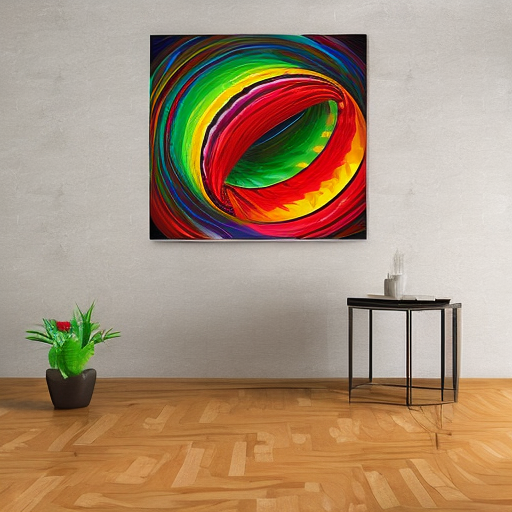Kinetic Art: Exploring Movement and Time in Art
Kinetic art is a genre of art that focuses on movement and time, incorporating elements such as motion, light, and sound to create dynamic and interactive artworks. It emerged in the 20th century as artists sought to break away from traditional static forms and explore the possibilities of incorporating movement into their works. Kinetic art encompasses a wide range of mediums, including sculpture, installation, performance, and digital art.
History and Origins
The roots of kinetic art can be traced back to the early 20th century, with artists such as Marcel Duchamp and Alexander Calder experimenting with motion in their works. However, it was not until the 1950s and 1960s that kinetic art gained significant recognition as an art movement. Artists like Jean Tinguely, Naum Gabo, and Victor Vasarely were at the forefront of this movement, exploring the potential of movement and technology in their artworks.
Key Characteristics
Kinetic art is characterized by its emphasis on movement, whether it is actual physical motion or the illusion of movement. Artists achieve this through various means, such as mechanical devices, motors, lights, or even natural forces like wind or water. The use of technology, such as sensors and computer programming, has also expanded the possibilities of creating dynamic and interactive kinetic artworks.
Types of Kinetic Art
Kinetic art can take many forms, each with its own unique approach to movement and time. Some of the most common types include:
- Sculpture: Kinetic sculptures are three-dimensional artworks that incorporate movement. They can range from small, delicate pieces to large-scale installations. Artists often use motors, gears, and other mechanical devices to create the movement.
- Installation: Kinetic installations are immersive artworks that transform the viewer’s environment. They often involve multiple elements, such as lights, sounds, and moving objects, to create an engaging and interactive experience.
- Performance: Kinetic performance art combines movement, dance, and technology to create live performances that explore the relationship between the human body and machines. Performers interact with mechanical or electronic devices to create a visually captivating experience.
- Light and Sound: Kinetic art can also incorporate light and sound to create dynamic and immersive experiences. Artists use various techniques, such as projection mapping, LED lights, and sound installations, to explore the interplay between visual and auditory elements.
- Digital: With the advent of digital technology, artists have been able to create kinetic artworks that exist solely in the virtual realm. These artworks often involve computer programming, interactive interfaces, and virtual reality to create immersive and interactive experiences.
Influence and Impact
Kinetic art has had a significant influence on the art world, pushing the boundaries of what is considered traditional art. It has challenged the notion of static artworks and encouraged viewers to actively engage with the artwork, blurring the line between the observer and the observed. Kinetic art has also influenced other fields, such as design, architecture, and technology, inspiring new ways of thinking about movement and interactivity.
Notable Artists
Several artists have made significant contributions to the field of kinetic art. Some notable figures include:
- Alexander Calder: Known for his mobile sculptures, Calder is considered one of the pioneers of kinetic art. His artworks, characterized by their delicate balance and movement, have had a lasting impact on the genre.
- Jesús Rafael Soto: Soto’s optical kinetic artworks create the illusion of movement through the use of repetitive patterns and carefully placed lines. His works often invite viewer participation, encouraging them to interact with the artwork and experience the visual effects.
- Rebecca Horn: Horn’s kinetic sculptures and installations often incorporate the human body, blurring the boundaries between the artwork and the viewer. Her works explore themes of time, space, and the relationship between the body and the environment.
- Olafur Eliasson: Eliasson’s immersive installations combine light, water, and natural elements to create dynamic and transformative experiences. His artworks often address environmental and social issues, inviting viewers to reflect on their relationship with the world around them.
Conclusion
Kinetic art is a dynamic and ever-evolving genre that continues to push the boundaries of traditional art forms. By incorporating movement, time, and interactivity, kinetic artists create artworks that engage the viewer on multiple levels. Whether through physical sculptures, immersive installations, or digital experiences, kinetic art invites us to explore the relationship between art, technology, and the human experience.












